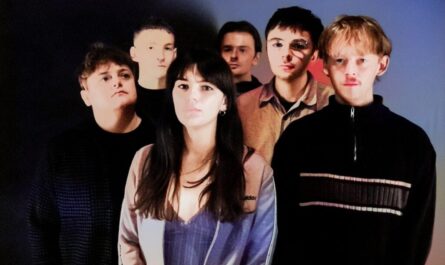In 1980, David Bowie would drop the last of his classic run of albums with the art-rock marvel Scary Monsters (And Super Creeps).
Superstardom and greater commercial heights would follow in the aftermath of Let’s Dance’s peroxide, soul boy domination of MTV three years later, but Scary Monsters… stood as the closing bookend of a phenomenal body of work that defined the 1970s and dictated much of punk and the new wave his last LP hurrah was dropped in. From The Rise and Fall of Ziggy Stardust and the Spiders from Mars’ glam zenith toward the chilly electronic exorcisms that haunt his so-called ‘Berlin Trilogy’, Bowie had fashioned both pop and alternative’s blueprint which would collide in creative fashion upon the new decade’s arrival.
With the exotic Lodger behind him, Bowie looked with equal parts fascination and cynicism at the emerging Blitz scene that congregated in London’s Covent Garden every Tuesday. All shaped by Ziggy Stardust’s exotic alien glamour in their youth, the New Romantics’ flamboyant embrace of androgynous extravagance, coupled with the associated synthpop scene that would serve its weekly DJ nights, Bowie found himself a most welcome guest when he snuck in to the bar’s top room surreptitiously by Blitz honchos Steve Strange and Rusty Egan.
Strange would appear in the pioneering video for ‘Ashes to Ashes’ among other Blitz regulars of the day, Bowie ever the shrewd artistic manoeuvrer of where pop’s winds were blowing, but a diffidence was held with much of the scene. Bowie was in his 30s as plans for Scary Monsters…’s session were due, and the grappling of his legacy was accelerated by the scores of new artists about to litter Top of the Pops that had all too obviously ‘borrowed’ elements of his craft, harbouring a particular contempt for Gary Numan’s Low-heavy automaton shtick.
While lyrically ambiguous as ever, the complex feelings surrounding his cultural impact as he waded through the ruminative fug of a soft midlife crisis were poured into the new wave coated ‘Teenage Wildlife’, boasting the wry barbs: “Same old thing in brand new drag comes sweeping into view / As ugly as a teenage millionaire pretending it’s a whizz kid world”. A wry putdown on the imitators around him, Bowie also presents a lyrical flashlight to his life and legacy, asking himself, “A broken-nosed mogul / Are you one of the new wave boys?”
‘Teenage Wildlife’ sounds awfully like a lyric from one of The Who’s biggest songs. Strangely featuring Pete Townsend’s guitar work on the same album’s ‘Because You’re Young’, ‘Baba O’Riley’ from nearly ten years earlier, too touched on the bewildering daze that comes with age and disillusionment. The second single from 1971’s Who’s Next and originally intended for the abandoned Lifehouse project, the “It’s only teenage wasteland” line was directly inspired by the flotsam of drug-addled hippies and strewn rubbish witnessed at their 1969 Isle of Wight and Woodstock Festival performances, an image of failed counterculture that coloured The Who’s material as they moved away from the peace and love idyll of the 1960s, a movement they always had one foot out of.
A year before that, old Dirty Mac member John Lennon entered a brand new creative spell, making sense of his career and life. Turning 30, Lennon pivoted to a direction of naked, self-confessional, shaking off The Beatles’ weighty lumber and chasing iconoclastic catharsis wrought from his primal scream therapy at the time. Featured on 1970’s solo debut John Lennon/Plastic Ono Band, ‘God’ unveils a private communiqué with the higher powers that be, warding off all pop-cultural, political, and historical baggage before arriving at the epiphanous, “I don’t believe in The Beatles / I just believe in me”.
The dreaded existential seizure that can strike around your 30s all inspired three immortal cuts that stood as their respective creators’ most lauded works. Arguably, no one pulled off the crisis-inspired record better than The Cure, who spun the defining Disintegration in 1989 over frontman Robert Smith’s anxiety of leaving his 20s behind, just as Bowie was pulled out of a second crisis of his own during the Tin Machine career renewal.





